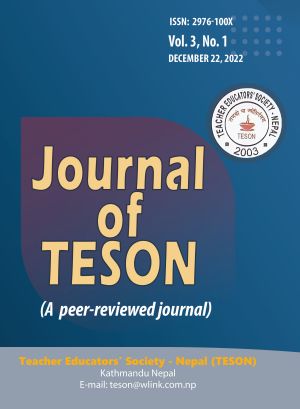A Survey on Existing Measures of Cost-Benefits Analysis in Education
DOI:
https://doi.org/10.3126/jteson.v3i1.51768Keywords:
Education-costs, education-benefits, age-earnings-profile, rate of returns, survey designAbstract
Cost-benefit analysis helps the private sector to decide on additional investments in education. It also helps the social sector to make educational plans and policies. This paper aims to review the methods and procedures, current practices, and guiding theories for the study of cost-benefit analysis of education. This study is based on the review survey design, and the materials have been collected using the purposive sampling method. It is concluded in the study that to study the cost-benefit analysis of education, researchers have used only five sources of data; households, employees, employers, students and educational institutions. Furthermore, to estimate the rate of return to education, Ingredient Approach, Mincerian Log Earnings Function, Ordinary Least Square, Multiple Regression and Age-earning Profiles (before-tax, after-tax, adjusted and unadjusted profiles) have been used. Likewise, it is also found that the value of BCR, NPV, IRR, adjusted R2, Mean, and Standard Deviation should be used; and human capital theory as a guiding theory should also be used to analyze the cost-benefit analysis of education.




